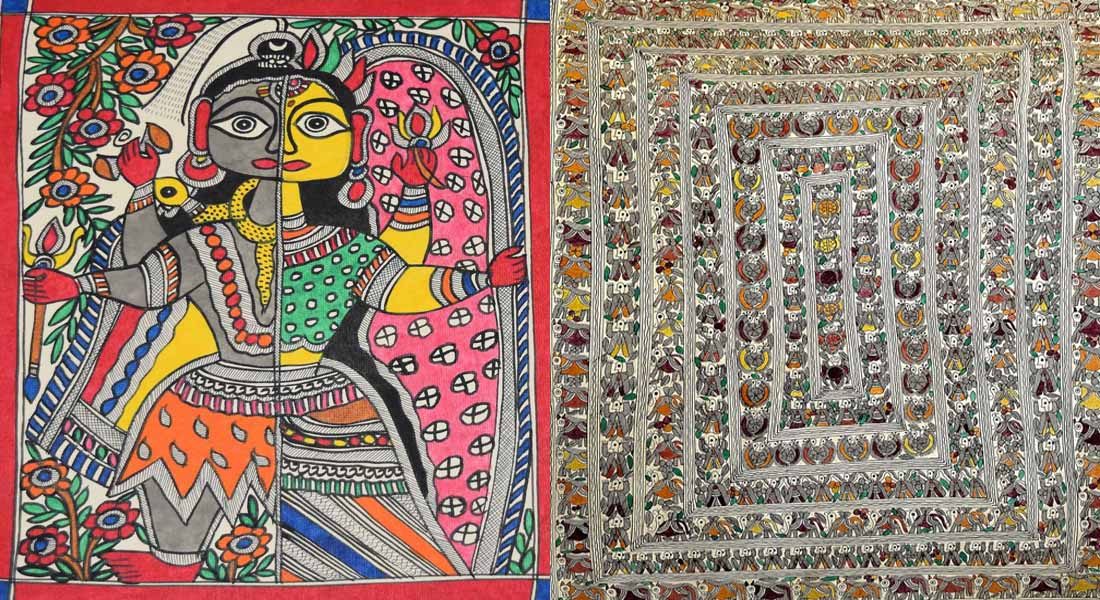Belonging to no orthodox or conventional school of art, Madhubani paintings stand out for their raw originality. The women of the region had neither education nor formal training in painting. The art form was handed down from one generation to the next. In the process, there have been changes and embellishments, but the basic style has remained largely unaltered.
The differences between the works of Brahmin and Kayasth women and women of lower castes were apparent. “The Harijan Madhubani paintings appeared simpler and less sophisticated. They were closer to the Geru tradition of painting, with emphasis on volume and depth rather than ornamentation, whereas the Brahmins and the Kayasth stuck to mythological and religious themes. The Scheduled Caste artists allowed themselves greater freedom of expression by depicting day-to-day life with ‘secular’ motifs. Yamuna Devi belonged to the Chamar community and made a portrait of a Chamar disposing of the carcass of a cow which is a famous example of this.
The Harijan paintings broadly come under two styles – Gobar, or cow dung – painting, and Goidana, or tattoo painting. The former is attributed to Chamar artists and the latter to the artists of the Dusadh community. These two communities, unlike other scheduled castes of the region, took up professional painting and evolved their own unique style of painting. The artists from these communities incorporated their own mythologies into their works. For example, Salhesh is an important divinity in the Dusadh community. This god of strength and his legends feature prominently in the works of Dusadh artists.
Kulkarni encouraged a Dalit lady Yamuna Devi, who at that point of time used to make mud frescos, and encouraged her to experiment on coated paper. She would paint using Holi colors, a tradition earlier used exclusively by the Brahmins and the Kayasth. Her mud paintings exhibited in Japan won her wide appreciation and she became the first Scheduled Caste woman to gain recognition for her Madhubani style. Gradually more dalits began working on paper.
An interesting outcome of commercialization was the emergence of different styles of painting, which can be broadly categorized as Geru, Bharni, Kachni, Tantric, Gobar, and Goidana. The most popular among them are the Bharni and Kachni styles. The former came from Jitbarpur and the latter from Ranti. The Bharni style is identified by the use of vibrant colors and minimal use of lines, while beautiful patterns through the intricate use of lines mark the Kachni style. Most of the early paintings were in the Geru style, which is very close to the folk art tradition. Lack of ornamentation and a very prominent black line were the identifying features of this style.

